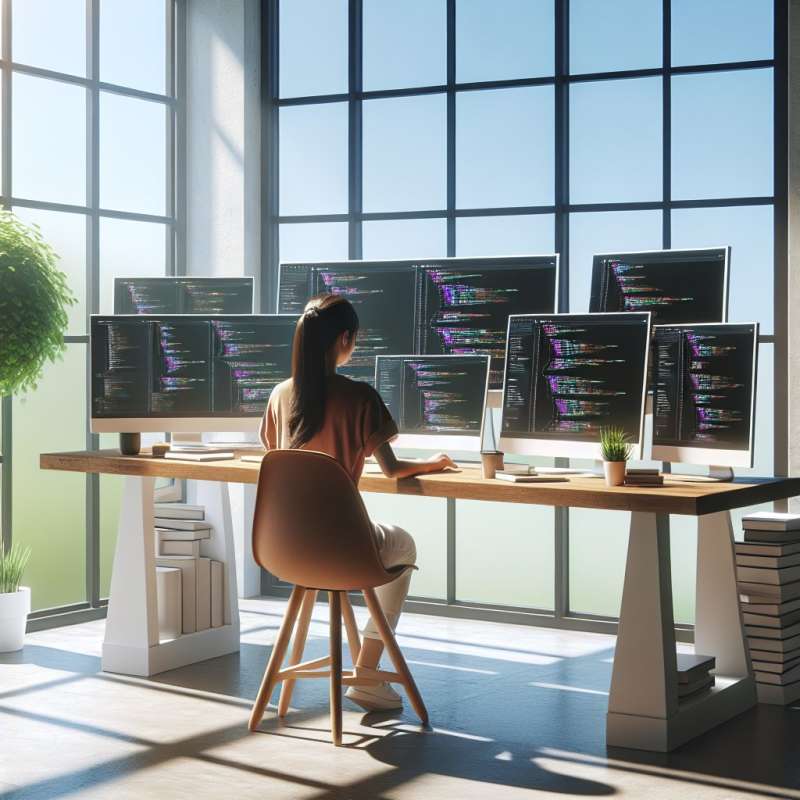
Introduction to Multitasking
Using multiple monitors allows programmers to multitask efficiently. By having more screen real estate, developers can view several applications simultaneously, reducing the need to switch contexts.
Enhanced Code Comparison
Comparing code across different files is easier with multiple screens. Developers can open multiple documents side-by-side to compare and merge code without continuously toggling between windows.
Streamlined Workflow
Multiple monitors create a fluid workflow. Tools like debuggers, servers, and databases can run on one screen, while the code editor is on another, keeping the workflow uninterrupted.
More Effective Debugging
Debugging is more efficient when the IDE is on one screen and the application on another. Real-time monitoring of changes while coding helps catch errors early, saving time and frustration.
Enhanced Learning Experience
With additional monitors, educational resources like tutorials, documentation, or forums can be easily accessed alongside the coding environment, fostering a more conducive learning experience.
Increased Information Accessibility
Developers often need access to API documentation, stack traces, or system metrics. Multiple monitors allow for these resources to be always visible, enhancing productivity.
Remote Collaboration Boost
In remote work, screens can be dedicated to communication tools, enabling developers to collaborate with peers through video calls or chat without interrupting the coding process.
What does multitasking efficiently require?
Multiple monitors for developers
Single monitor with high resolution
Context switching with one screen
Company